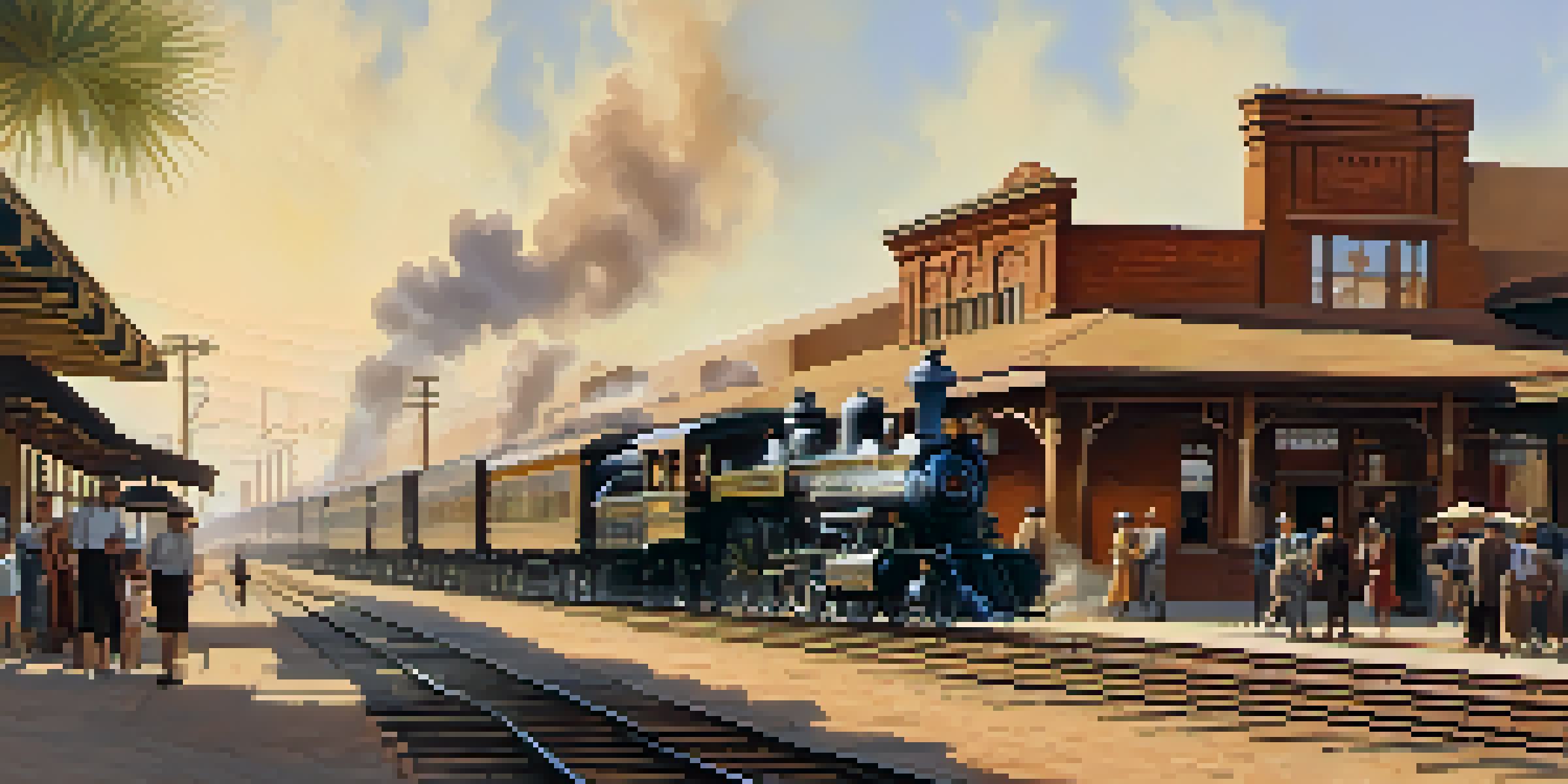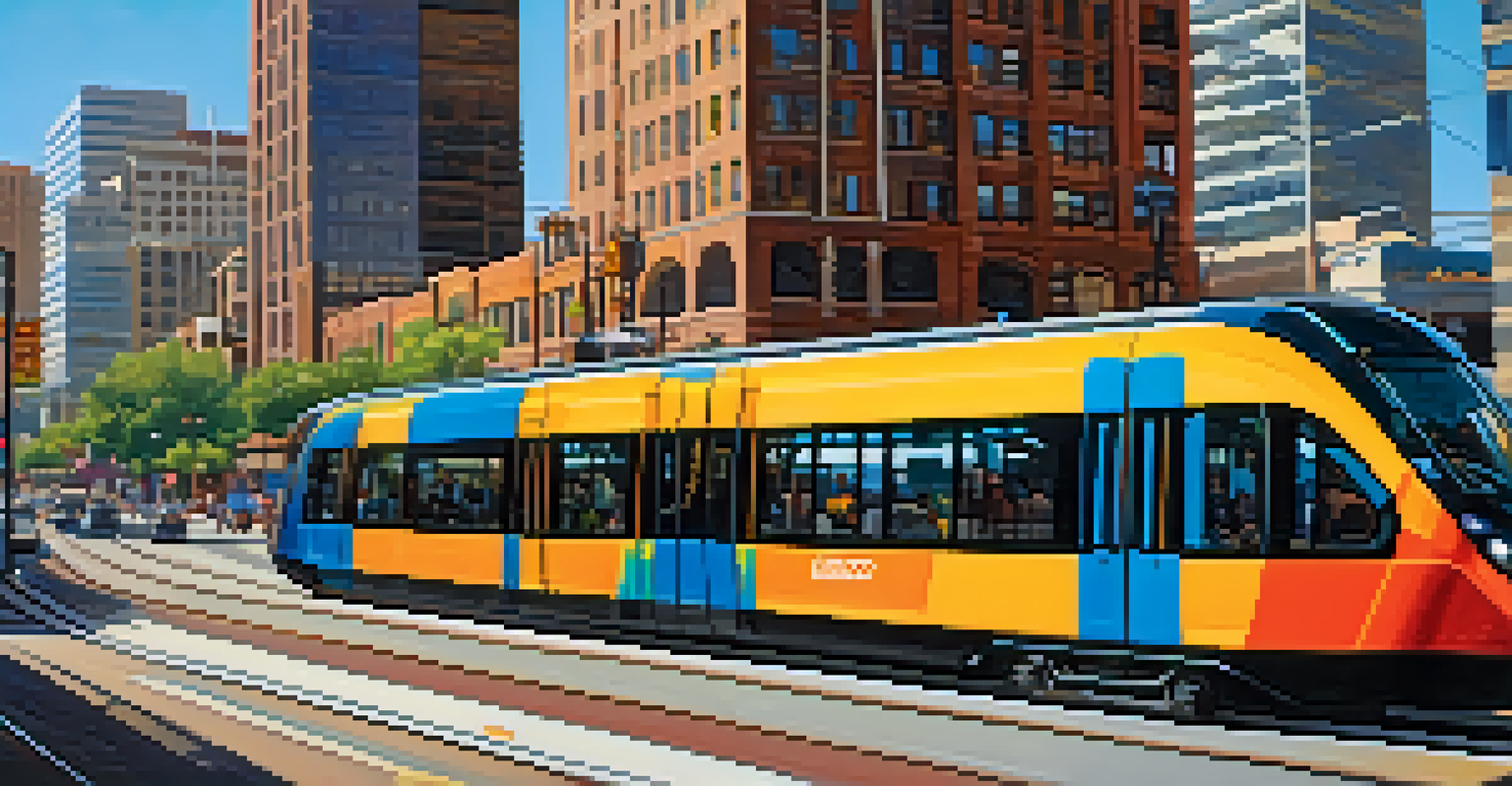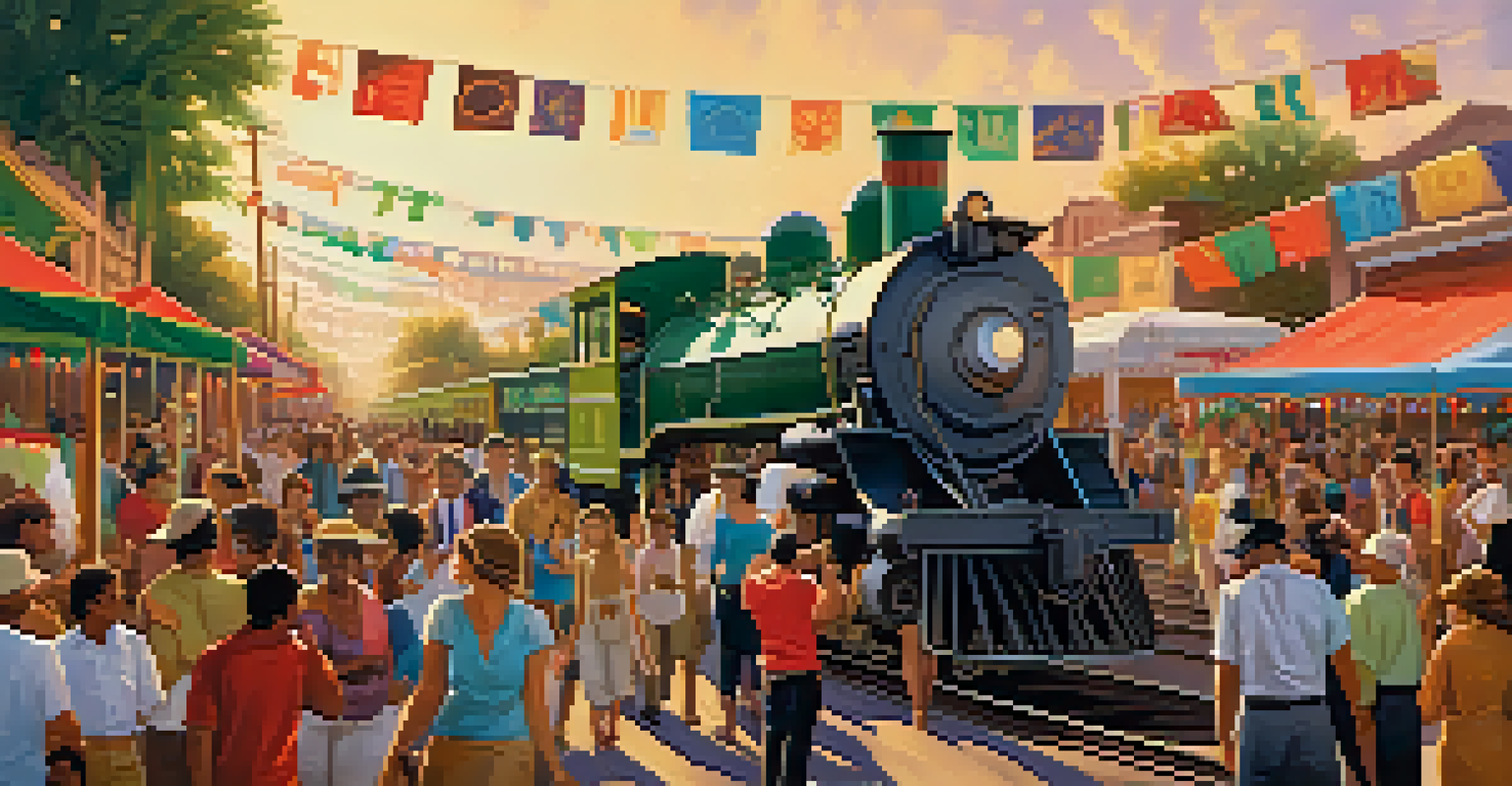The Role of Railroads in Phoenix's Urban Development

Introduction: Railroads as Catalysts for Urban Development
Railroads have played a pivotal role in the urban development of many cities, and Phoenix is no exception. From their inception in the 19th century, railroads not only provided transportation but also fostered economic growth. As the city expanded, railroads became the backbone of commerce, enabling the movement of goods and people.
Railroads are a remarkable example of the transformative power of infrastructure. They connect people and ideas, fostering economic growth and community identity.
In Phoenix, the arrival of railroads was like opening a door to new opportunities. The connectivity they offered attracted businesses and residents alike, contributing to the city's rapid growth. This transformation laid the foundation for what would become a bustling urban center in the arid desert of Arizona.
Understanding the impact of railroads helps us appreciate how they shaped Phoenix's identity today. They were not just tracks on the ground; they were the arteries of economic vitality, influencing various aspects of life in the city.
Historical Context: The Arrival of Railroads in Phoenix
The first major railroad to reach Phoenix was the Southern Pacific Railroad in the late 1800s. This event marked a turning point in the city's development, connecting it to other major markets and cities. The railroad provided a reliable means of transporting agricultural products, which were vital for the local economy.

As farmers and merchants recognized the potential of rail transport, they began to invest in the area, leading to a population influx. This growth was akin to planting seeds in fertile soil, with the railroad nurturing them into a thriving community. The city's infrastructure began to evolve rapidly to accommodate the growing demands.
Railroads Fuel Urban Growth
The arrival of railroads in Phoenix catalyzed economic growth, transforming the city into a commercial hub.
The historical significance of this arrival cannot be overstated, as it set the stage for Phoenix to become a commercial hub in the Southwest. From a modest settlement, it transformed into a vital stop on the national rail network, creating pathways for future development.
Economic Growth: Railroads and Local Industries
The railroad industry opened doors for various local industries, significantly boosting Phoenix’s economy. With the ability to transport goods efficiently, businesses flourished, from agriculture to manufacturing. This interconnectedness allowed local farmers to reach broader markets, ensuring their produce was in demand.
The train is a symbol of progress and connection, embodying the spirit of urban development and cultural exchange.
For example, the cotton industry saw remarkable growth due to the railroad's capacity to ship products across the country. This not only increased profits for local farmers but also created jobs and supported ancillary industries, such as textile mills. The ripple effect was profound, as economic prosperity attracted more residents and businesses to the region.
As the economy thrived, so did the community. The influx of people brought diversity and innovation, transforming Phoenix into a melting pot of ideas and cultures. The economic boom fueled by the railroads was a crucial element of Phoenix’s urban expansion, fostering a dynamic environment.
Urban Infrastructure: Railroads Shape City Layout
The layout of Phoenix itself was heavily influenced by the arrival of the railroads. As tracks were laid, they determined the flow of commerce and the development of neighborhoods. Areas near the rail lines became prime real estate for businesses and housing, shaping the city’s growth patterns.
This development was not just about convenience; it also sparked urban planning innovations. Planners began to design the city around these transportation hubs, making it easier for residents to access jobs and services. The railroads effectively became the spine of the city, with roads and pathways radiating outwards.
Cultural Connections Through Railroads
Railroads fostered cultural exchange in Phoenix, contributing to a unique community identity celebrated through local traditions.
As a result, Phoenix's urban landscape emerged with distinct characteristics that reflected its reliance on rail transport. The integration of railroads into the city’s infrastructure created a blueprint for future urban development, emphasizing connectivity and accessibility.
Cultural Impact: Railroads and Community Identity
Beyond economic and physical development, railroads significantly influenced the cultural identity of Phoenix. They brought diverse populations together, facilitating cultural exchange and interaction. This melting pot of ideas and traditions contributed to a unique community spirit that defined the city.
Cultural events, festivals, and gatherings often centered around the railroad, celebrating the shared experiences of those who traveled by train. Stories of journeys and adventures became woven into the fabric of local folklore, enriching the community's narrative. The railroad was not just a means of transport; it was a symbol of connection.
As Phoenix continued to grow, its identity remained tied to its railroad heritage. This cultural significance is still celebrated today, reminding residents of the city’s rich history and the role of railroads in shaping their lives.
Modern Developments: Railroads in Today’s Phoenix
Today, railroads continue to play an essential role in Phoenix's urban landscape, albeit in a more modern context. While freight transport remains vital, passenger rail services have also gained prominence, with the light rail system connecting various neighborhoods. This shift reflects a growing emphasis on sustainable urban transport solutions.
The current light rail system is a testament to how railroads have evolved to meet contemporary needs. It provides residents with convenient access to jobs, entertainment, and education, embodying the spirit of connectivity that the original railroads established. This modern network encourages public transit use, reducing traffic congestion and promoting a greener city.
Modern Railroads and Sustainability
Today, railroads in Phoenix play a crucial role in sustainable urban transport, promoting accessibility and reducing traffic congestion.
Moreover, as Phoenix looks to the future, the integration of rail into urban planning remains crucial. By continuing to prioritize rail infrastructure, the city can accommodate its expanding population while remaining committed to sustainability and accessibility.
Challenges and Opportunities: The Future of Railroads in Phoenix
While the railroads have historically contributed to Phoenix's growth, they also face challenges in the modern era. Issues such as aging infrastructure, competition from other transportation modes, and the need for upgrades pose significant hurdles. However, these challenges also present opportunities for innovation and improvement.
Investing in rail infrastructure can revitalize not just the transportation system but also the surrounding communities. Enhancements like electrification and smart technology can make rail transport more efficient and appealing. This focus on modernization can help Phoenix maintain its competitive edge as a growing urban center.

Furthermore, as cities worldwide prioritize sustainable development, Phoenix has the chance to lead by example. By committing to robust rail systems, the city can reduce its carbon footprint and improve the quality of life for its residents, ensuring that the legacy of railroads continues to thrive well into the future.